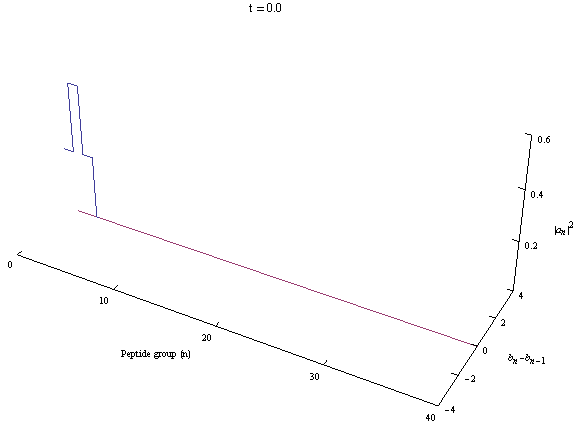Davydov solitons in protein α-helices
- Details
- Category: News
- Published on Thursday, 03 February 2022 22:00
- Written by Danko Georgiev
- Hits: 1786
Proteins sustain life through catalysis of biochemical processes in living organisms. Protein function involves physical work and as such can be performed only at the expense of free energy released by biochemical reactions. Protein dynamics is subject to quantum physical laws because proteins are nanosystems. The quantum transport of energy in proteins, however, is unclear due to challenges for solving the many-body Schrödinger equation.
In our recent article published in Physica A: Statistical Mechanics and its Applications, we study the transport of energy inside protein α-helices by deriving a system of quantum equations of motion from the Davydov Hamiltonian with the use of the Schrödinger equation and the generalized Ehrenfest theorem. Numerically solving the system of quantum equations of motion for different initial distributions of the amide I energy over the peptide groups confirmed the generation of both moving or stationary Davydov solitons in the absence of thermal agitation. In our simulations, the soliton generation, propagation, and stability were found to be dependent on the symmetry of the exciton-phonon interaction Hamiltonian and the initial site of application of the exciton energy.





